2002
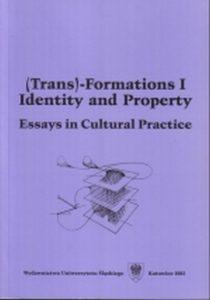 This paper addresses the infatuation of contemporary culture with zombies/the living dead and the resulting from it glorification of inertia. Zombies, as presented in the article, are understood in terms of paradoxical entities defined primarily through their lack of identity and as such acquiring new properties and becoming a new identity instantly recognisable to anyone but themselves. The paper divides zombies into four categories: (1) random zombies – driven by their survival instinct and characterised by constant hunger, (2) slave zombies – direct descendants of the voodoo tradition, created solely for the purpose of ensuring the material profit or sexual gratification of their masters, (3) evil zombies – malevolent creatures of limited intelligence driven by the desire to do evil rather than just by pure animal instinct, and (4) conscious zombies – fully aware and intelligent creatures whose properties make them superior to ordinary human beings. Observing the constant growth of the desirability of the zombie category the paper links it to the popular perception of man becoming dependent on the artificially created environment, and a common belief in the possibility of breaking the bondage of social and economic conventions and achieving the sense of liberation only through the complete and unconditional submission to the external reality and the forces governing it.
This paper addresses the infatuation of contemporary culture with zombies/the living dead and the resulting from it glorification of inertia. Zombies, as presented in the article, are understood in terms of paradoxical entities defined primarily through their lack of identity and as such acquiring new properties and becoming a new identity instantly recognisable to anyone but themselves. The paper divides zombies into four categories: (1) random zombies – driven by their survival instinct and characterised by constant hunger, (2) slave zombies – direct descendants of the voodoo tradition, created solely for the purpose of ensuring the material profit or sexual gratification of their masters, (3) evil zombies – malevolent creatures of limited intelligence driven by the desire to do evil rather than just by pure animal instinct, and (4) conscious zombies – fully aware and intelligent creatures whose properties make them superior to ordinary human beings. Observing the constant growth of the desirability of the zombie category the paper links it to the popular perception of man becoming dependent on the artificially created environment, and a common belief in the possibility of breaking the bondage of social and economic conventions and achieving the sense of liberation only through the complete and unconditional submission to the external reality and the forces governing it.
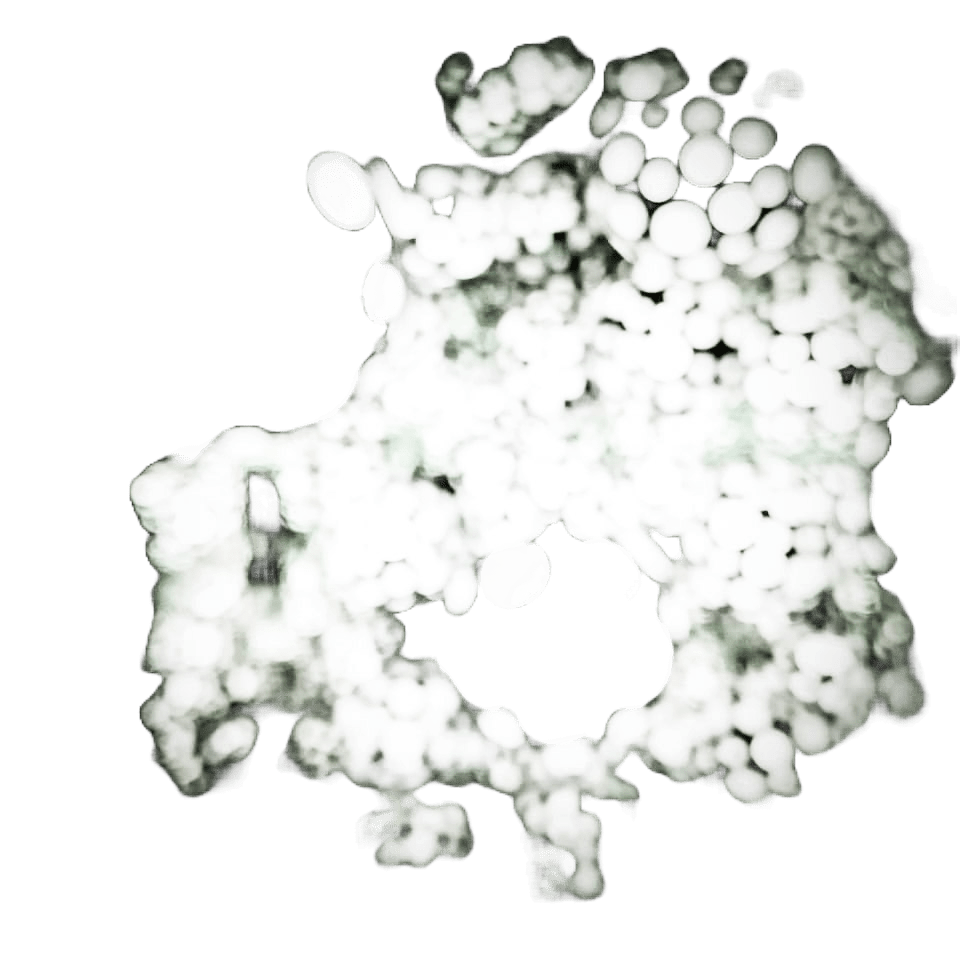
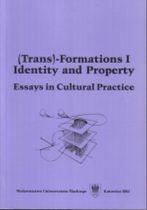

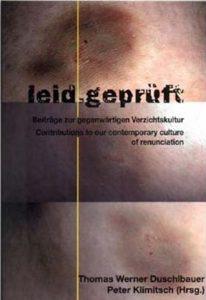 Resulting from the glorification of inertia and suffering Gothic can be seen as built on masochistic premises. But while early Gothic texts seemed to focus on the trials and tribulations of victimised heroines, contemporary gothicisms serve as markers of renunciation. Gothic identity, seen as both the identity of fictitious Gothic heroes and of people for whom Gothic has become a lifestyle (from alternative performance artists to the members of the Goth subculture), advocates wilful embracing of the Other as a means to renounce any aspects of conformity expected of the members of Western post-industrial societies. Having incorporated identity and properties of the Other, modern-day Gothic heroes indulge in celebrations of carnivalesque martyrdom in the name of ascertaining their individuality. The paper discuss the role exposure to pain and suffering and its submissive acceptance play in the formation of Gothic identity. The paper’s main assumption is that self-induced melancholia characteristic of Gothic heroes is generally a therapeutic technique aimed at combating post-traumatic depression by means of developing an alternative narcissistic identity. Gothic renunciation of conformity can thus be said to undergo a number of fixed stages: from the initial rejection of society’s norms, through the discovery of masochistic pleasure in passive resistance and development of manipulation skills, to the hedonistic enjoyment of the fully-formed narcissistic identity. The moment when disease becomes an aesthetic ideal, pain turns to pleasure and Gothic succeeds.
Resulting from the glorification of inertia and suffering Gothic can be seen as built on masochistic premises. But while early Gothic texts seemed to focus on the trials and tribulations of victimised heroines, contemporary gothicisms serve as markers of renunciation. Gothic identity, seen as both the identity of fictitious Gothic heroes and of people for whom Gothic has become a lifestyle (from alternative performance artists to the members of the Goth subculture), advocates wilful embracing of the Other as a means to renounce any aspects of conformity expected of the members of Western post-industrial societies. Having incorporated identity and properties of the Other, modern-day Gothic heroes indulge in celebrations of carnivalesque martyrdom in the name of ascertaining their individuality. The paper discuss the role exposure to pain and suffering and its submissive acceptance play in the formation of Gothic identity. The paper’s main assumption is that self-induced melancholia characteristic of Gothic heroes is generally a therapeutic technique aimed at combating post-traumatic depression by means of developing an alternative narcissistic identity. Gothic renunciation of conformity can thus be said to undergo a number of fixed stages: from the initial rejection of society’s norms, through the discovery of masochistic pleasure in passive resistance and development of manipulation skills, to the hedonistic enjoyment of the fully-formed narcissistic identity. The moment when disease becomes an aesthetic ideal, pain turns to pleasure and Gothic succeeds. 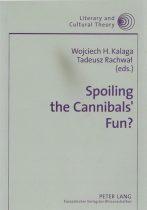
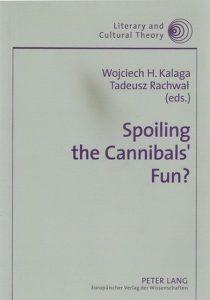 The article explores the romantic face of cannibalism, where the act of devouring human flesh is deconstructed as the ultimate expression of love. It focuses on the issue of love cannibalism and the romanticised myth of the loving cannibal, which has been functioning as a successful cultural metaphor since the 1990s. The article sets love cannibalism in the broader context of necrophilia, understood both in terms of a sexual disorder and a morbid fascination with the subject of love in death. Finally, it compares the romantic representation of cannibalism in contemporary texts to the similarly romantic depiction of AIDS, the infection with which is treated as equivalent with taking control of the lover’s body. The core of the article is the discussion of two criminal cases – Jeffrey Dahmer’s and Issei Sagawa’s – which serve to illustrate the relationship between love cannibalism and necrophilia. The argument is further expanded to examine various representations of necrophilia and love cannibalism in contemporary literature and film.
The article explores the romantic face of cannibalism, where the act of devouring human flesh is deconstructed as the ultimate expression of love. It focuses on the issue of love cannibalism and the romanticised myth of the loving cannibal, which has been functioning as a successful cultural metaphor since the 1990s. The article sets love cannibalism in the broader context of necrophilia, understood both in terms of a sexual disorder and a morbid fascination with the subject of love in death. Finally, it compares the romantic representation of cannibalism in contemporary texts to the similarly romantic depiction of AIDS, the infection with which is treated as equivalent with taking control of the lover’s body. The core of the article is the discussion of two criminal cases – Jeffrey Dahmer’s and Issei Sagawa’s – which serve to illustrate the relationship between love cannibalism and necrophilia. The argument is further expanded to examine various representations of necrophilia and love cannibalism in contemporary literature and film.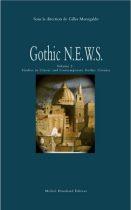
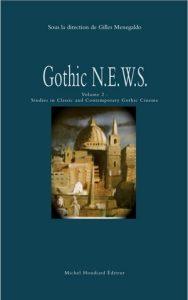 Contemporary Asian horror films seem to be particularly fond of resorting to various techniques of visual recording. This paper focuses in more detail on two such relatively recent films: a Hong Kong production Abnormal Beauty (2004), directed/produced by Oxide and Danny Pang and a Thai film Shutter (2004), directed by Banjong Pisanthanakun and Parkpoom Wongpoom, both of which feature professional photographers as main protagonists and resort consequently to the notion of photography as a key concept for the narrative structure and the films’ visual organisation. The paper will examine the ways the two films exploit photography’s specific relation to death and the afterlife, raising the question whether the theoretical discourse of photography can potentially “westernise” the narrative technique of an Asian film.
Contemporary Asian horror films seem to be particularly fond of resorting to various techniques of visual recording. This paper focuses in more detail on two such relatively recent films: a Hong Kong production Abnormal Beauty (2004), directed/produced by Oxide and Danny Pang and a Thai film Shutter (2004), directed by Banjong Pisanthanakun and Parkpoom Wongpoom, both of which feature professional photographers as main protagonists and resort consequently to the notion of photography as a key concept for the narrative structure and the films’ visual organisation. The paper will examine the ways the two films exploit photography’s specific relation to death and the afterlife, raising the question whether the theoretical discourse of photography can potentially “westernise” the narrative technique of an Asian film.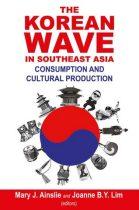
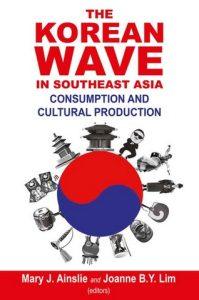 This paper examines Korean influences on contemporary Thai cinema in terms of genre development, narrative structure and co-production. It will discuss the emergence of the strong “masculinised” heroine in Thai comedies, re-configuration of the horror, comedy and action thriller genres, changes in the narrative strategies of 21st century Thai films, and the results of creative co-production between Thailand and Korea.
This paper examines Korean influences on contemporary Thai cinema in terms of genre development, narrative structure and co-production. It will discuss the emergence of the strong “masculinised” heroine in Thai comedies, re-configuration of the horror, comedy and action thriller genres, changes in the narrative strategies of 21st century Thai films, and the results of creative co-production between Thailand and Korea.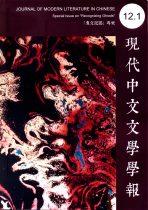
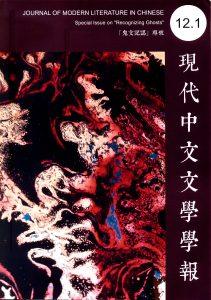 With their themes of ghosts, violence and monstrosity, horror films have been instrumental in capturing the ghostly returns of collective trauma. Thai horror, unsurprisingly, also cannot disassociate itself from history. Through their ghosts and, more recently, through their turn to “body horror,” contemporary Thai horror films come to terms with the “wounds” in the country’s social fabric. The strategies of archivization of Thai history and cultural memory used in these films vary, since some traumatic incidents in Thai history have been denied the right to be remembered by the state apparatus. Other, less politically-repressed events, such as murders, accidents, or cases of gross negligence are meticulously reconstructed from available authentic sources and reproduced in Thai horror films, which take on the function of becoming the archives of Thai popular memory. This article discusses Thai horror films’ strategies of archivization of Thailand’s past.
With their themes of ghosts, violence and monstrosity, horror films have been instrumental in capturing the ghostly returns of collective trauma. Thai horror, unsurprisingly, also cannot disassociate itself from history. Through their ghosts and, more recently, through their turn to “body horror,” contemporary Thai horror films come to terms with the “wounds” in the country’s social fabric. The strategies of archivization of Thai history and cultural memory used in these films vary, since some traumatic incidents in Thai history have been denied the right to be remembered by the state apparatus. Other, less politically-repressed events, such as murders, accidents, or cases of gross negligence are meticulously reconstructed from available authentic sources and reproduced in Thai horror films, which take on the function of becoming the archives of Thai popular memory. This article discusses Thai horror films’ strategies of archivization of Thailand’s past.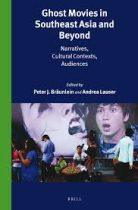
 Thai spiritualism, attributed by some anthropologists to the hybridization, consumerization and politicization of Thai popular religion, can be seen as having significant consequences for the study of Thai horror cinema, since it allows for both a metaphorical (modern) and literal (pre-modern) reading of its ghost movies. On the literal level, these movies function as a fictional retelling of real or hypothetically possible spiritual encounters, and by tapping into the personal experience of their audience they can be found particularly frightening. On another hand, if the filmmakers stray too far from the audience’s expectations they risk getting seriously criticized for producing an “unconvincing” film narrative. Adding to this, the movies themselves are frequently being produced and promoted in a variety of supernatural contexts, including making offerings to the spirits, employing mediums and fortune tellers, or documenting instances of haunting on set. Last but not least, as a peculiar form of spiritual exchange, movies (though not necessarily horror movies) are commonly being screened at shrines and temples to appease local spirits and deities, or as a form of post-mortem entertainment for the recently deceased during the wake. This paper discusses these and other examples of the mutual relationship between Thai horror movies and Thai spiritualism and suggests a connection between the popular animistic, mediumistic and religious practices of the Thais and their love of horror cinema.
Thai spiritualism, attributed by some anthropologists to the hybridization, consumerization and politicization of Thai popular religion, can be seen as having significant consequences for the study of Thai horror cinema, since it allows for both a metaphorical (modern) and literal (pre-modern) reading of its ghost movies. On the literal level, these movies function as a fictional retelling of real or hypothetically possible spiritual encounters, and by tapping into the personal experience of their audience they can be found particularly frightening. On another hand, if the filmmakers stray too far from the audience’s expectations they risk getting seriously criticized for producing an “unconvincing” film narrative. Adding to this, the movies themselves are frequently being produced and promoted in a variety of supernatural contexts, including making offerings to the spirits, employing mediums and fortune tellers, or documenting instances of haunting on set. Last but not least, as a peculiar form of spiritual exchange, movies (though not necessarily horror movies) are commonly being screened at shrines and temples to appease local spirits and deities, or as a form of post-mortem entertainment for the recently deceased during the wake. This paper discusses these and other examples of the mutual relationship between Thai horror movies and Thai spiritualism and suggests a connection between the popular animistic, mediumistic and religious practices of the Thais and their love of horror cinema.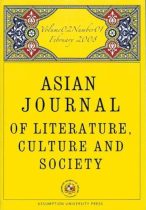
 This paper examines the notion of spiritual technologies, understood in a twofold manner. On the one hand, based on an analysis of a number of contemporary East Asian and South East Asian horror films, the discussion will focus on the ways modern technologies, particularly visual and media technologies, have contributed to a shift in understanding the concept of the ghost. On the other hand, this paper will focus in more detail on the case of Thai horror cinema, where ghosts have become a narrative technique and ghost stories seem to have contributed to the development of cinematic technologies in general.
This paper examines the notion of spiritual technologies, understood in a twofold manner. On the one hand, based on an analysis of a number of contemporary East Asian and South East Asian horror films, the discussion will focus on the ways modern technologies, particularly visual and media technologies, have contributed to a shift in understanding the concept of the ghost. On the other hand, this paper will focus in more detail on the case of Thai horror cinema, where ghosts have become a narrative technique and ghost stories seem to have contributed to the development of cinematic technologies in general.
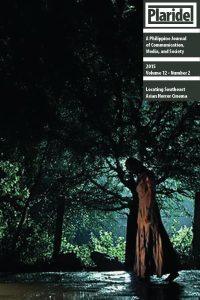 This article offers a brief historical and theoretical overview of found footage films and their contribution to the horror genre, and focuses in more detail on four Southeast Asian productions of the kind made between 2009-2012: Keramat/Sacred (Servia & Tiwa, 2009), Seru/Resurrection (Asraff, Pillai, Andre & Jin 2011), Haunted Changi (Kern, Woo & Lau, 2010), and Darkest Night (Tan, 2012), all of which can be viewed as an alternative to the mainstream local horror cinema. The paper argues that the two most common strategies used by found footage horror films (including the four films in question) are the techniques that effectively authenticate the horror experience: inducing a heightened perception of realism in the audience and a contradictory to it feeling of perceptive subjectivity.
This article offers a brief historical and theoretical overview of found footage films and their contribution to the horror genre, and focuses in more detail on four Southeast Asian productions of the kind made between 2009-2012: Keramat/Sacred (Servia & Tiwa, 2009), Seru/Resurrection (Asraff, Pillai, Andre & Jin 2011), Haunted Changi (Kern, Woo & Lau, 2010), and Darkest Night (Tan, 2012), all of which can be viewed as an alternative to the mainstream local horror cinema. The paper argues that the two most common strategies used by found footage horror films (including the four films in question) are the techniques that effectively authenticate the horror experience: inducing a heightened perception of realism in the audience and a contradictory to it feeling of perceptive subjectivity.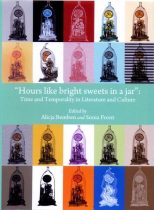
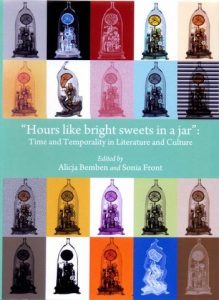 This chapter discusses Bangkok time in line with the studies of city life that draw attention to the everyday experience, urban practices, movement, memory and performing the city, this paper engages in a discussion of temporal cities realized through the symbolic, ritualistic performance of their inhabitants and manifestations of collective memory on the example of Bangkok, a mega-metropolis known for its rather precarious relationship with reality. Though all four of Pile’s phantasmagorias can be successfully applied to a reimagining of Bangkok, this chapter will focus on the two most obvious categories – ghosts and magic, exploring their connection to the city’s past and present and the lingering temporalities they leave behind.
This chapter discusses Bangkok time in line with the studies of city life that draw attention to the everyday experience, urban practices, movement, memory and performing the city, this paper engages in a discussion of temporal cities realized through the symbolic, ritualistic performance of their inhabitants and manifestations of collective memory on the example of Bangkok, a mega-metropolis known for its rather precarious relationship with reality. Though all four of Pile’s phantasmagorias can be successfully applied to a reimagining of Bangkok, this chapter will focus on the two most obvious categories – ghosts and magic, exploring their connection to the city’s past and present and the lingering temporalities they leave behind.